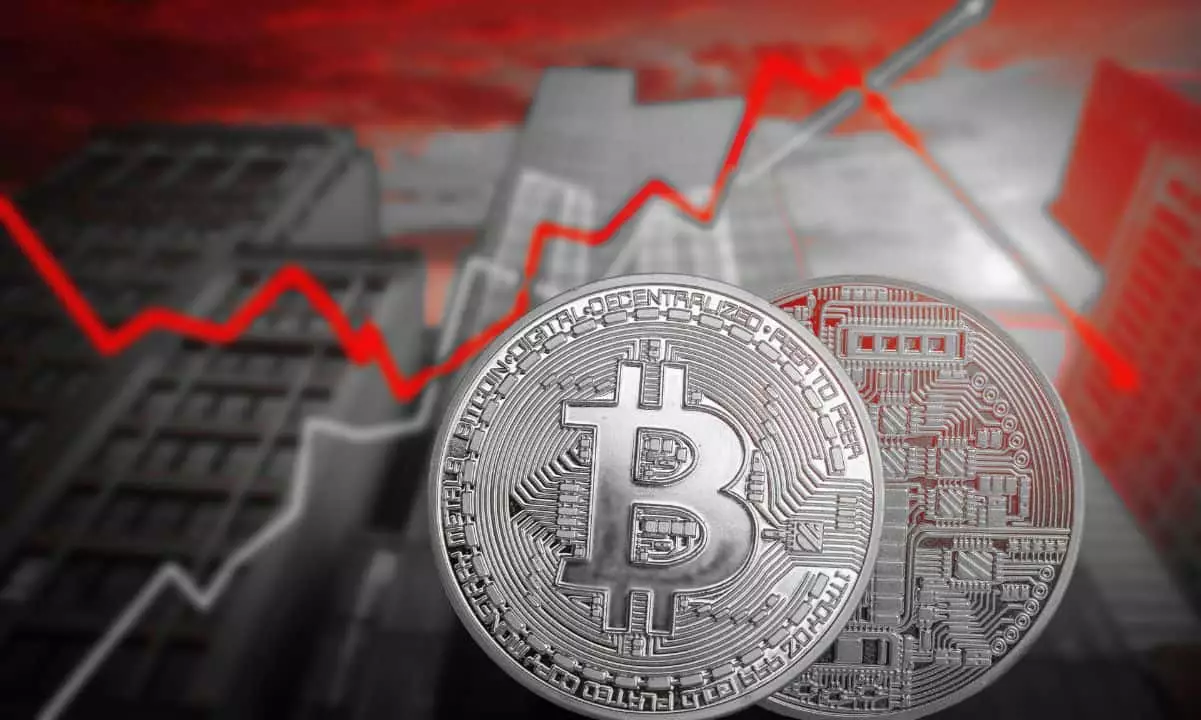The global economic landscape transformed dramatically in 2025, signifying a pivotal moment for trade relations and cryptocurrency markets alike. The shift began as President Trump, in the nascent stages of his administration, utilized sweeping import tariffs aimed at certain countries and sectors. This approach, unprecedented in its scope and aggression, has reshaped the way markets respond—not just in traditional investment sectors but also in the volatile arena of cryptocurrencies like Bitcoin. As international relations falter, the ensuing economic ripples have exposed the fragility of our financial systems, while also highlighting Bitcoin’s fluctuating role as a possible contender for a safe-haven asset.
The Dance of Correlations: Bitcoin’s Relationship with Traditional Assets
Initially, Bitcoin’s correlation with equities saw a steep decline as trade war rhetoric escalated. Notably, by February 20, the 30-day correlation dipped to an alarming -0.32. However, as uncertainty mounted, this dynamic shifted sharply, morphing into a positive correlation of 0.47 by March—a clear signal of the intertwined fates of crypto and equity markets. Such volatility poses the question: Is Bitcoin merely a puppet dancing to the strings of macroeconomic turmoil, or does it possess an underlying strength that could allow it to rise as a leader in times of distress?
The contrast becomes even more pronounced when considering Bitcoin’s historical behavior during crises. A trend has emerged indicating that while Bitcoin can respond to market fluctuations in the short term, it ultimately aims to maintain its identity independent of fluctuations in the equities market. During significant downturns in traditional markets, Bitcoin has shown a remarkable ability to withstand pressure, reinforcing its proposition as a portfolio diversifier.
Macroeconomic Influences and Their Ramifications
The dramatic shifts within the global economy raise critical questions about the nature of Bitcoin’s movements. Its correlation with gold, a classic safe-haven asset, turned negative as Bitcoin began to resonate more with overall market sentiment rather than its perceived protective value. This indicates that in times of escalating tension, Bitcoin is still not fully recognized as an asset that can safeguard against inflation or political risk—even as it boldly strives to claim that title.
While many continue to cling to Bitcoin’s narrative as a hedge against traditional financial systems, the evidence suggests a more complex relationship. The cryptocurrency’s short-term alignments with equities underline the pervasive influence of macroeconomic factors—particularly trade policies and interest rate expectations. A comprehensive analysis reveals that despite occasional securities market correlations, Bitcoin’s long-term potential remains dependent on reclaiming its heritage as a low-correlation asset.
Resilience amidst Economic Downturn
One of the most compelling aspects of Bitcoin’s recent performance has been its resilience in the face of adversity. Even as traditional assets stagger under the weight of a protectionist climate, Bitcoin has often held its value or responded positively, garnering the conviction of long-term holders. This unwavering belief in the asset reflects a broader recognition that, although Bitcoin is subject to the same fiscal pressures as any trade-reliant commodity, its unique characteristics allow it to thrive, or at least survive, during precarious times.
For Bitcoin to reclaim its position as a true alternative asset class, it must find a way to disengage from fleeting market fears. The Binance report underlines the potential for Bitcoin to evolve back into the safe-haven narrative it so desperately seeks. As the Federal Reserve contemplates potential rate cuts while grappling with persistently high inflation, Bitcoin could once again be viewed as an inflation-resistant store of value, not merely a speculative asset.
Implications for the Future of Cryptocurrency
The coming years will be critical for both Bitcoin and the broader cryptocurrency market as they navigate through a stagflationary and increasingly protectionist economic environment. The interrelation between trade policies, inflation data, and central bank actions will likely dictate the trajectory of this dynamic market. This interplay not only challenges Bitcoin’s status but also raises significant questions concerning the sustainability of the broader crypto ecosystem.
The reality is roiling beneath the surface: a prolonged trade war could crush investor optimism, yet any sign of loosening monetary policies or regulatory progress could catalyze a powerful resurgence in crypto appeal. If Bitcoin manages to further distance itself from traditional asset correlations, it could indeed emerge as a bastion of financial autonomy—an asset not bound by the constraints of government policies or market whims. Only time will tell how it will navigate the waves of change in an uncertain economic future.


Leave a Reply